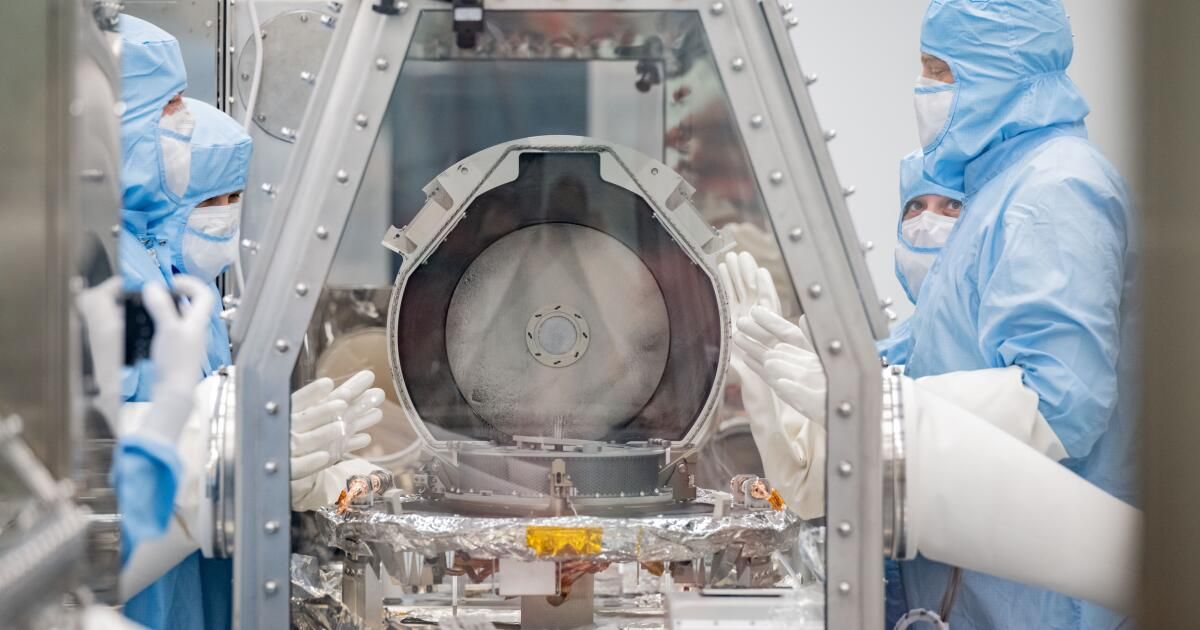Late last year, a spacecraft containing samples from a 4.6 billion-year-old asteroid landed safely in the desert after a journey of 1.2 billion miles. There was just one small problem: NASA couldn't open the container containing their precious rocks.
After months of tinkering, scientists at NASA's Johnson Space Center in Houston finally dislodged two stuck fasteners that had kept pieces of the Bennu asteroid out of reach of researchers.
“It's open! It's open!” NASA Planetary Sciences Division aware Friday the X, along with a photograph of the abundance of dust and small slate-colored rocks inside the container.
Scientists had to change course on the canister-opening effort in mid-October after it became clear that none of the items in NASA's approved toolbox could force open the last two of the 35 fasteners that They sealed the container.
To prevent the sample from being contaminated by Earth's air, it was stored in a clean room at the Houston facility, where conservators dressed in protective suits delicately dismantled the container. The team designed new custom tools to open the end latches.
The agency will now finish extracting the approximately 9-ounce sample, which will be weighed and chemically analyzed. Much of the OSIRIS-REx (an acronym for Origins, Spectral Interpretation, Resource Identification, and Security-Regolith Explorer) payload will be frozen and carefully preserved so that future generations of scientists can study it with advanced technologies.
“We are very pleased with the success,” said NASA OSIRIS-REx lead sample curator Nicole Lunning. in a sentence.
It took more than seven years and about $1 billion to bring back a sample of Bennu, a space rock formed during the early days of the solar system. Asteroid samples found on Earth have essentially been cooked by their scorching journey through the atmosphere, limiting what scientists can learn from them.
With OSIRIS-REx, “the goal is to recover an ancient piece of the early solar system that is pristine,” says NASA astrobiologist Jason Dworkin he told the Times in September. “You can use these remnants of the formation of the solar system to construct what happened in that formation.”
The spacecraft that collected the sample in 2020 and launched it toward Earth in September is now heading on its next mission. The spacecraft, now called OSIRIS-APophis EXplorer or OSIRIS-APEX, is en route to a peanut-shaped asteroid called Apophis.
For a brief (but alarming) time, astronomers thought Apophis might be on its way to crashing disastrously into Earth. Now that that worrying possibility has been ruled out, scientists are looking forward to 2029, when the asteroid will pass closer to Earth than any object its size.
“It's something that almost never happens, and yet we can witness it in our lifetime,” JPL navigation engineer Davide Farnocchia said last year. “We normally send spacecraft to visit asteroids and learn more about them. In this case, it is nature that does the flyover for us.”












